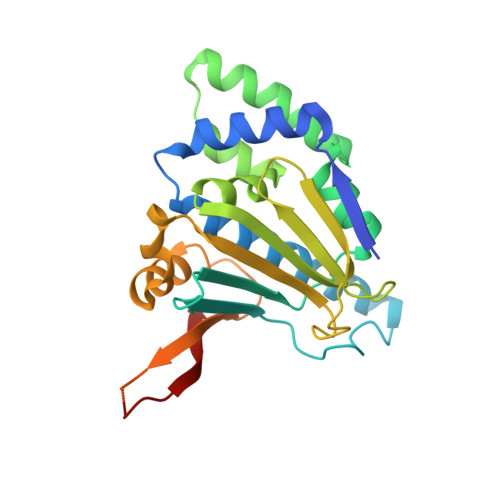Structure of the N-terminal domain of GRP94. Basis for ligand specificity and regulation.
Soldano, K.L., Jivan, A., Nicchitta, C.V., Gewirth, D.T.(2003) J Biol Chem 278: 48330-48338
- PubMed: 12970348
- DOI: https://doi.org/10.1074/jbc.M308661200
- Primary Citation of Related Structures:
1QY8, 1QYE, 1U2O, 6D28 - PubMed Abstract:
GRP94, the endoplasmic reticulum (ER) paralog of the chaperone Hsp90, plays an essential role in the structural maturation or secretion of a subset of proteins destined for transport to the cell surface, such as the Toll-like receptors 2 and 4, and IgG, respectively. GRP94 differs from cytoplasmic Hsp90 by exhibiting very weak ATP binding and hydrolysis activity. GRP94 also binds selectively to a series of substituted adenosine analogs. The high resolution crystal structures at 1.75-2.1 A of the N-terminal and adjacent charged domains of GRP94 in complex with N-ethylcarboxamidoadenosine, radicicol, and 2-chlorodideoxyadenosine reveals a structural mechanism for ligand discrimination among hsp90 family members. The structures also identify a putative subdomain that may act as a ligand-responsive switch. The residues of the charged region fold into a disordered loop whose termini are ordered and continue the twisted beta sheet that forms the structural core of the N-domain. This continuation of the beta sheet past the charged domain suggests a structural basis for the association of the N-terminal and middle domains of the full-length chaperone.
Organizational Affiliation:
Departments of Biochemistry and Cell Biology, Duke University Medical Center, Durham, North Carolina 27710, USA.
















